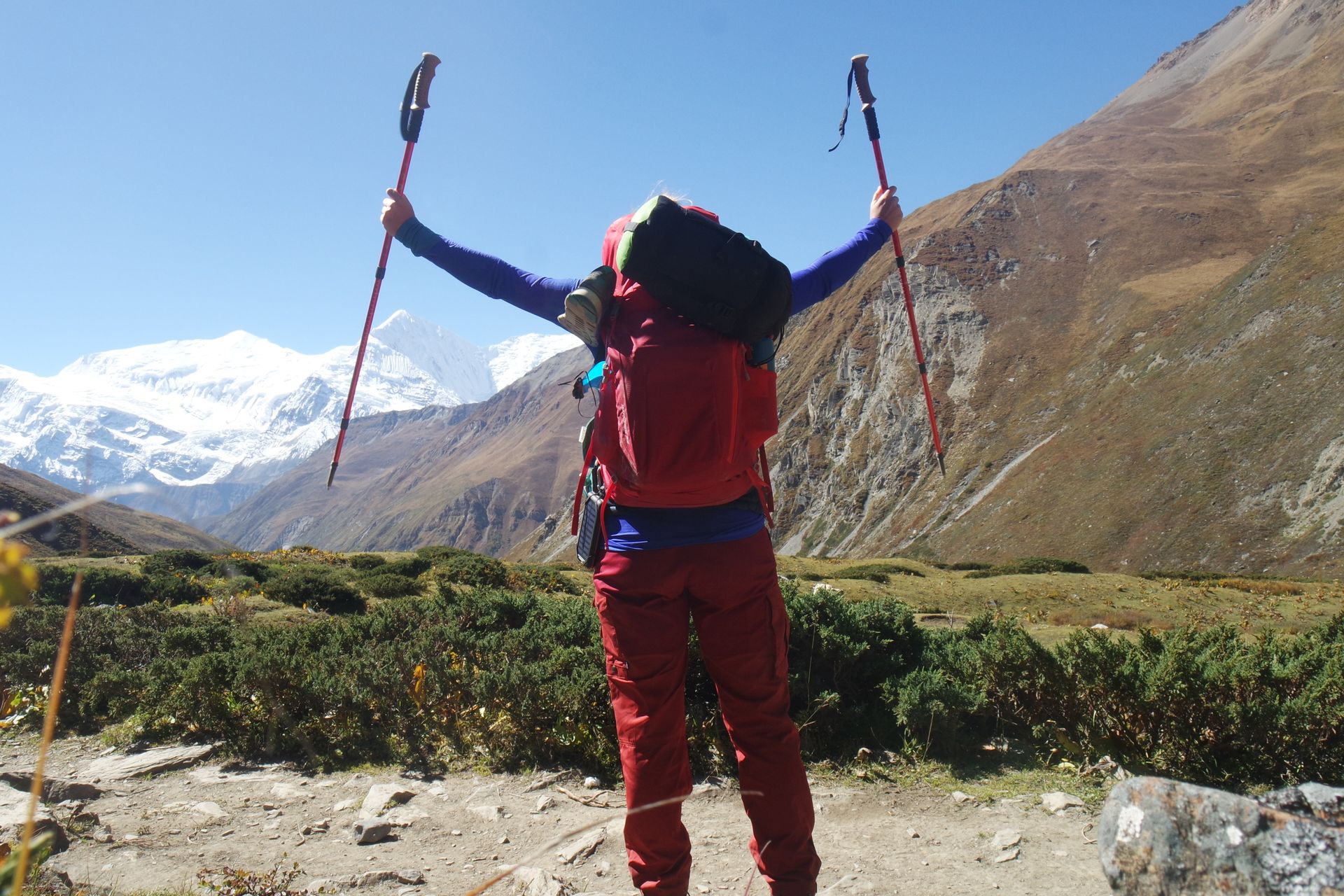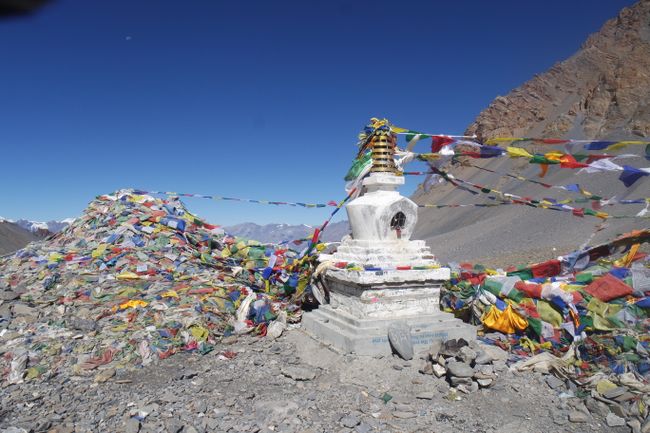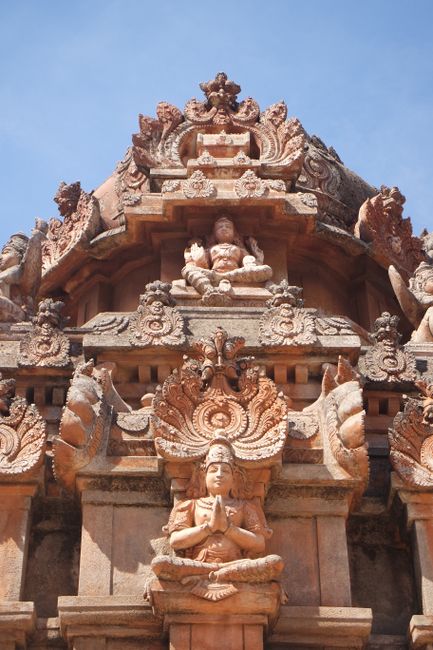History class Hampi
പ്രസിദ്ധീകരിച്ചു: 07.11.2018
വാർത്താക്കുറിപ്പിലേക്ക് സബ്സ്ക്രൈബ് ചെയ്യുക
Instead of letting myself be driven to the other sights by a tuktuk, I decide to go on a guided bike tour at 33 degrees ^^ Interestingly enough, our guide rides ahead on a scooter, supposedly to be able to transport someone in case of emergency. It was a really good decision, firstly because of all the information and secondly, I won't be asked for a single photo in the protection of our group. What I remember:
Hampi had a king who won 11 victories and had three wives. He was only allowed to take a wife after capturing the respective city. At that time, Hampi was a flourishing and rich metropolis with 4000 temples and a natural fortification due to volcanic activities. This is how the bizarre rock formations, which were also used for temples and sculptures, were created. For example, Ghanes (the elephant) is a 4-meter-high stone figure. It was sculpted from a single large rock, which rests on a natural foundation. Only then was the temple built around the sculpture. At that time, many statues had gold chains and diamond jewelry.
In addition, Hampi had seven different bazaars, such as the diamond and spice bazaar. Back then, there was still trust, because the stalls were simply folded together with all the riches and no one dared to steal anything. The image of Ghanes was immortalized in various places, and the corresponding location determined its respective name. For example, at the spice bazaar, there is the mustard seed Ghanes, and at the nut bazaar, there is the peanut Ghanes ^^ The city's wealth was also its downfall. A sultan and his army looted the treasures and took all the gold. In the process, they damaged statues and temples, knowing that they would be considered unholy with even a small injury. For this reason, many sculptures are missing trunks, fingers, hands, or ornaments. They are also not repaired because the spiritual does not return that way. In a way, a stroke of luck for the present time, as impressively well-preserved structures are still left. 20 years ago, the symbol of the city 'Narasimha', a cross between a human and a lion (Simha= Simba), was restored. This caused a huge dispute in the city. After all, an unholy statue is not worth spending a lot of money on, but should rather be invested in a temple. Therefore, this was the only attempt.
To move the huge stones for the buildings, elephants were used. But there were also specially trained pachyderms that executed people. If a secret of the city was betrayed to an enemy, the death penalty was imposed. For this purpose, the animals were trained to crush people under their feet....CRUEL. But elephants also served as a means of transport for the royal family. At the royal temple and the summer house, there are covered parking spaces for the riding companions :) In a way, a huge garage for elephants.
Only 40 years ago, many remnants of the city were found, as the jungle has spread protectively over the buildings. This is why our guide also had to move with his family because his house was located directly on an overgrown bazaar. The road leading to the central tower will soon be removed because there are still 8 steps to the former road below. Two elephants are also suspected on both sides of the stairs, presumably also with broken trunks.
Our guide organizes a very special lunch for us. Once upon a time, a woman owned a restaurant, but it was destroyed in an earthquake in 2011. Now she cooks at home and serves it in the park next to the Queen's bath. If that's not unique. There is Thali...the Indian version of Dahl Bat and it is served on a plate with a palm leaf to make dishwashing easier. As soon as lunch is over, everyone sets off. However, I stay in the beautiful park with the shade-giving trees. As soon as I am alone again, the annoyance with the photos starts again. There is no 'please' and no understanding from the intrusive Indians until eventually my patience explodes and I angrily ride my bike back to the city. In the hotel, I take a short break and then set off again. My path leads me to a former guard post on a mountain. From here, you have a great 360 degree view of Hampi and the rock formations. In addition, this viewpoint is a popular spot for sunrise and sunset. In the dark, the tower is illuminated and creates a mystical atmosphere. I go inside one last time and see many people getting ready to sleep on the floor. Afterwards, I learn that they are believers who have made a pilgrimage here, washed themselves in the river, and are now spending a night in the temple.
വാർത്താക്കുറിപ്പിലേക്ക് സബ്സ്ക്രൈബ് ചെയ്യുക
ഉത്തരം


